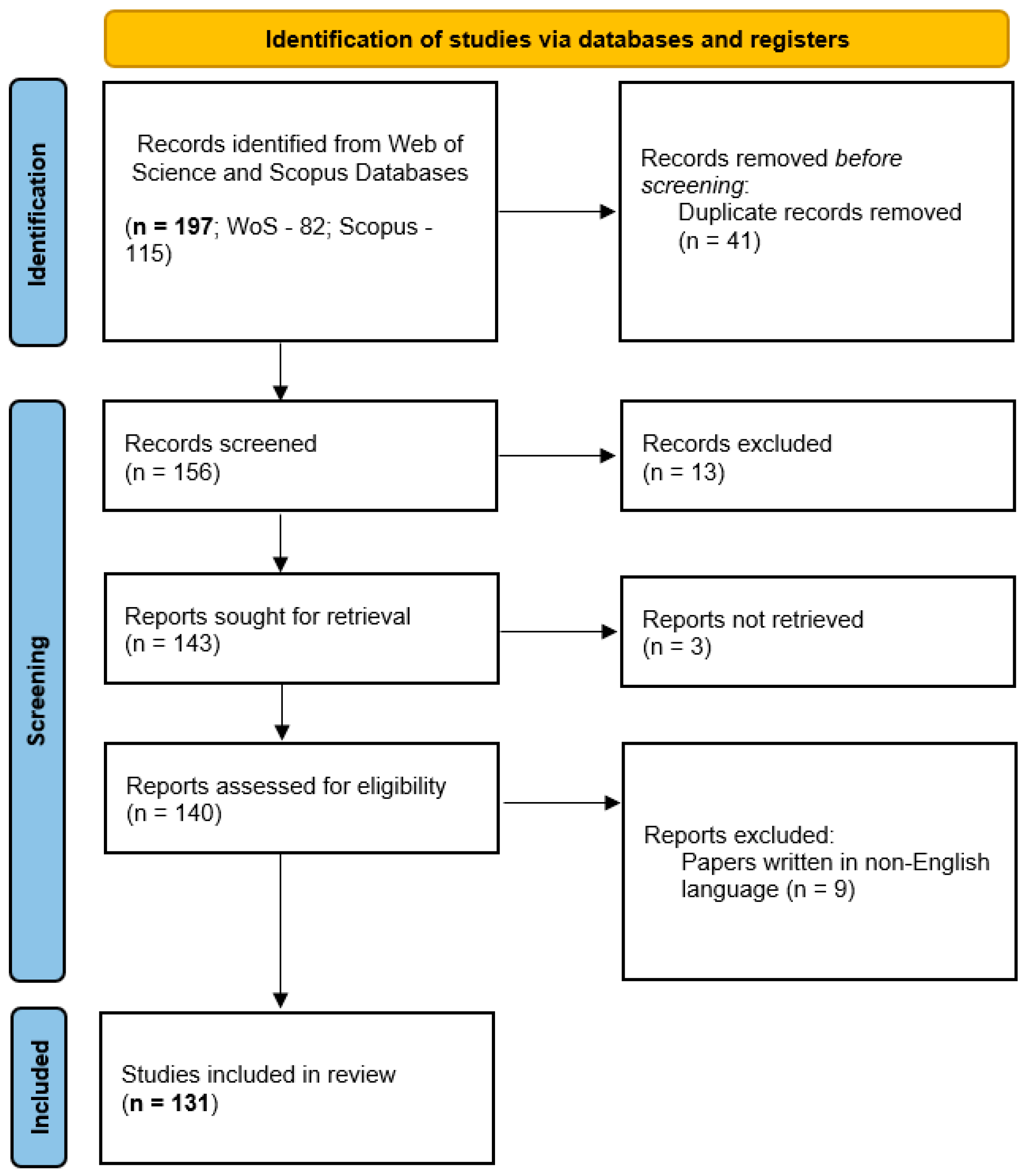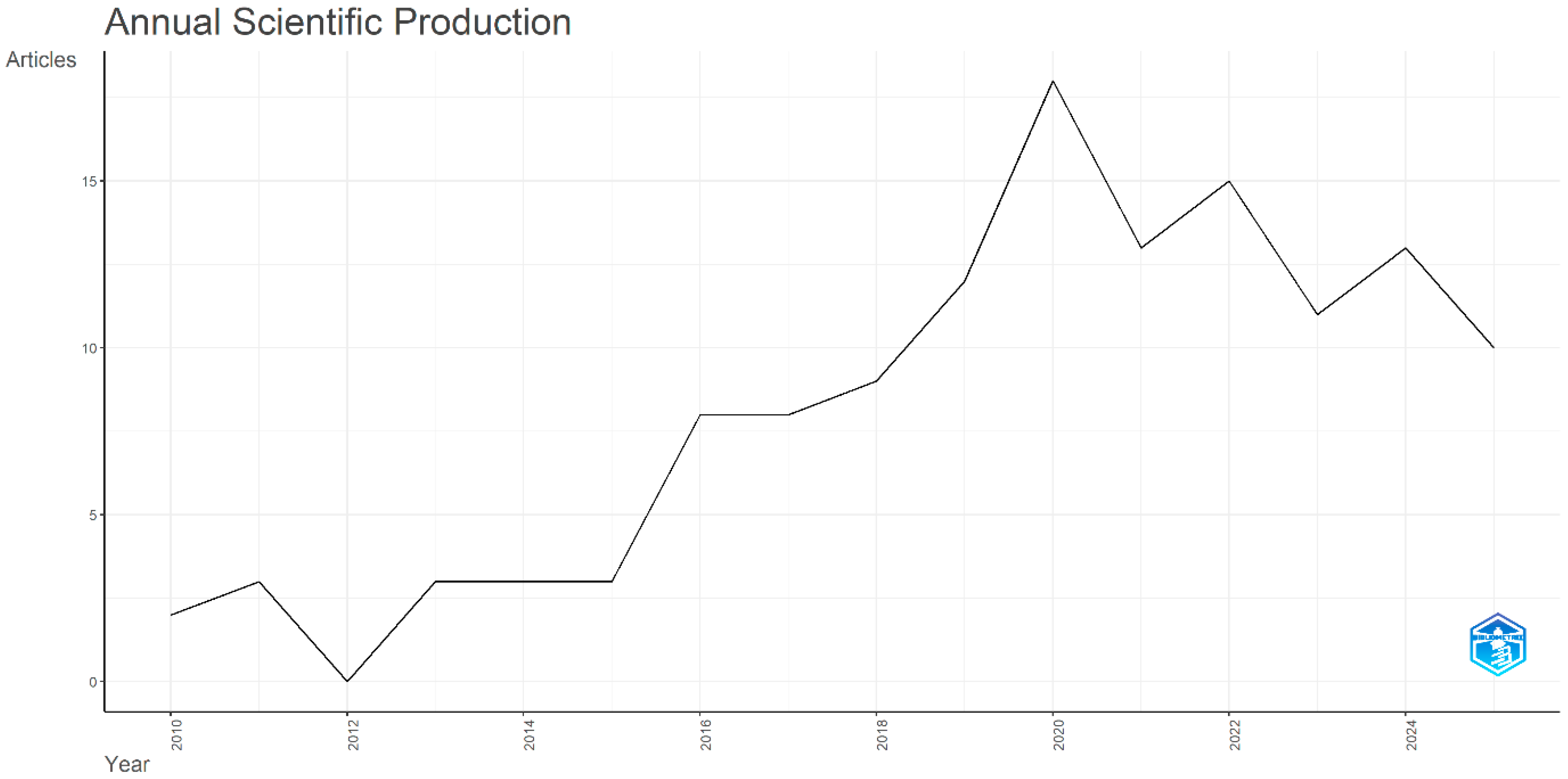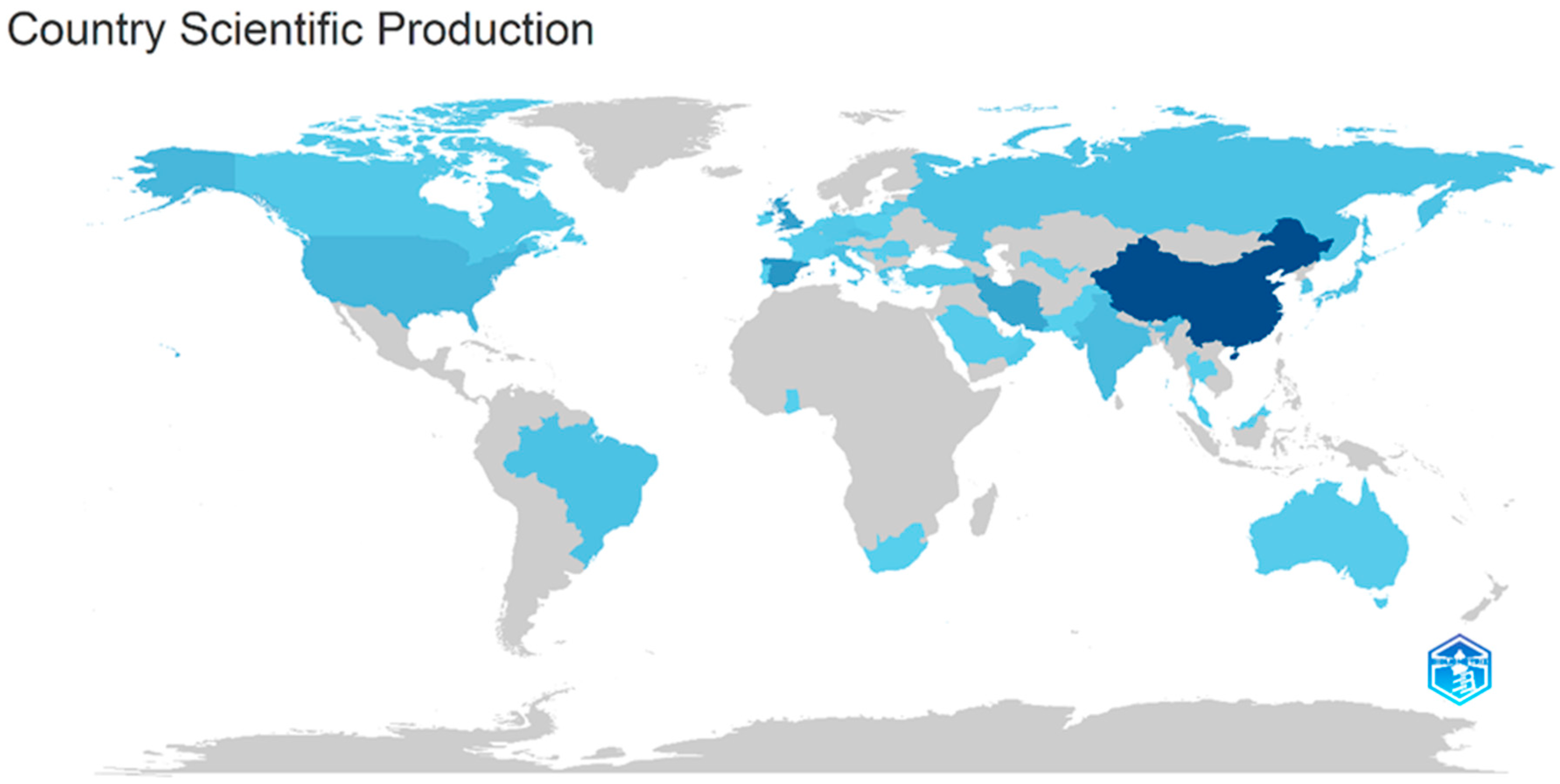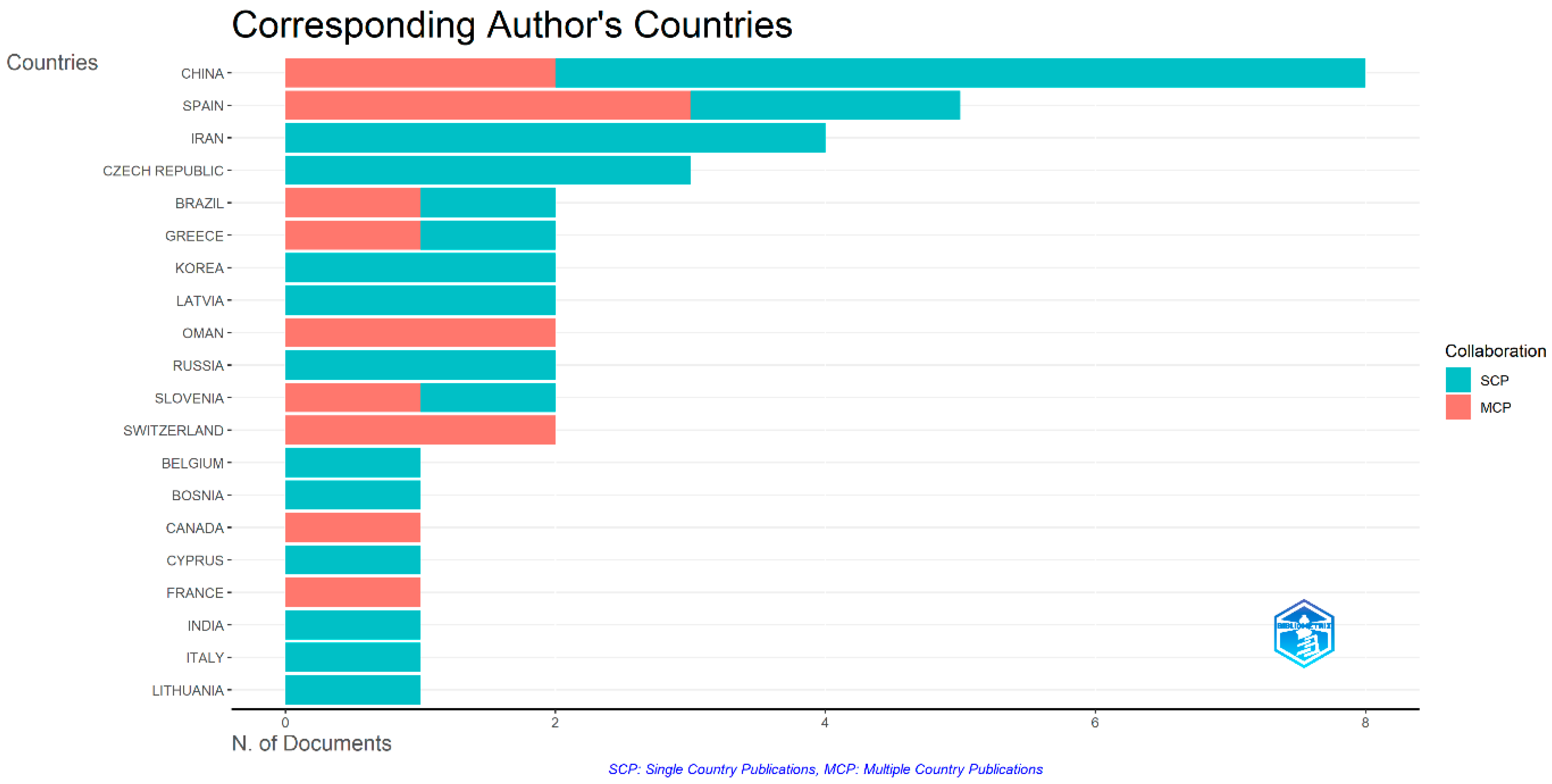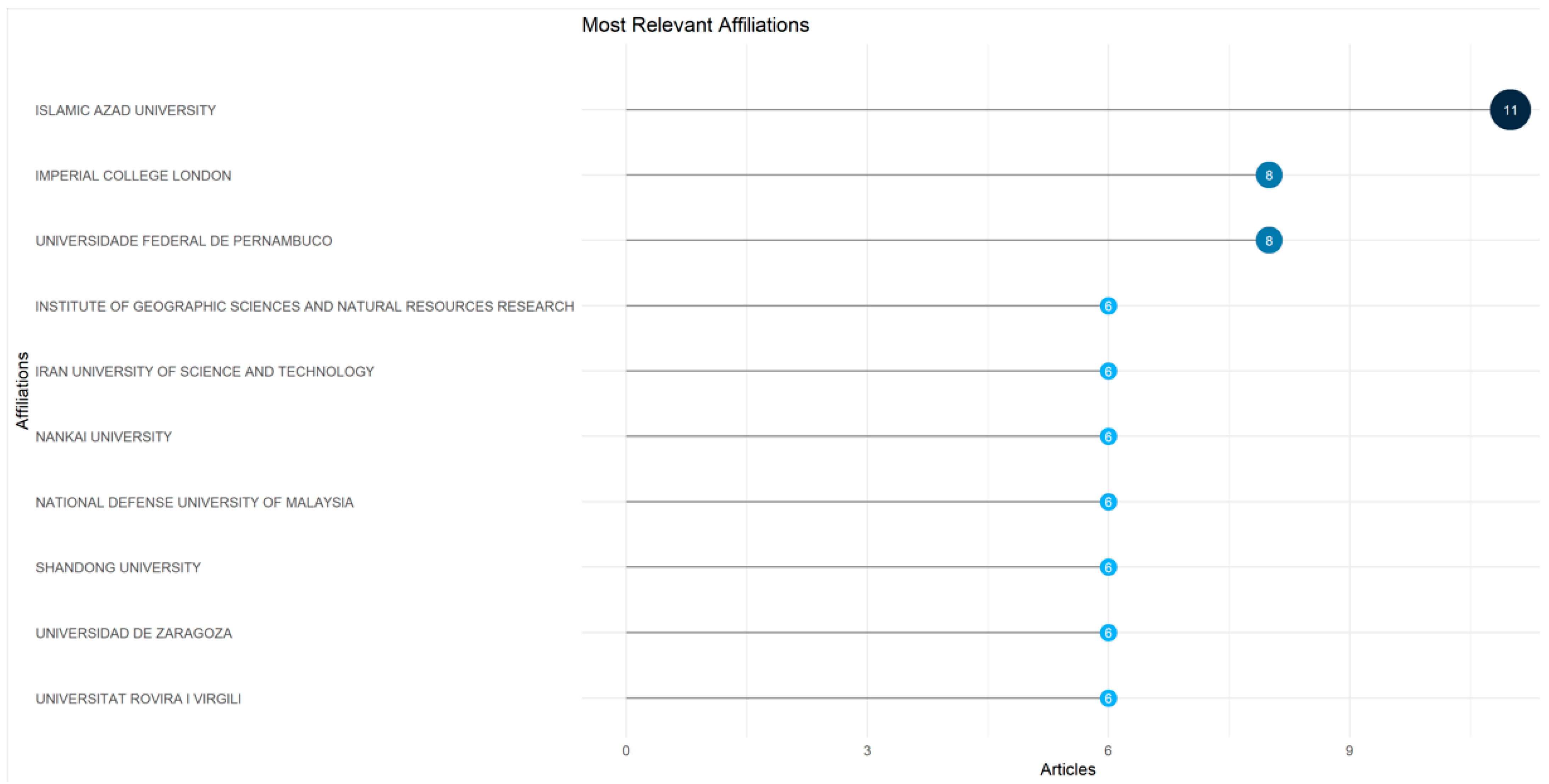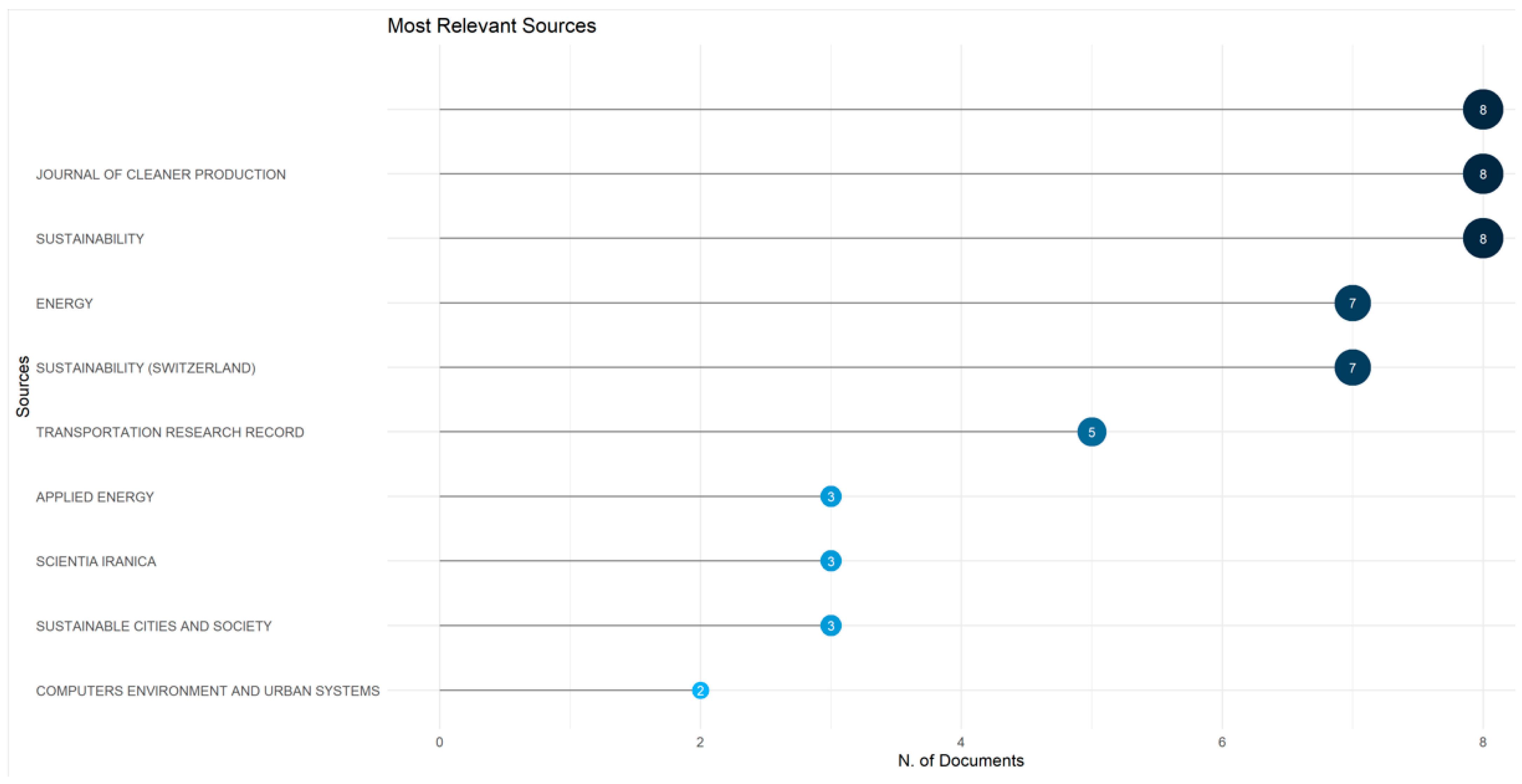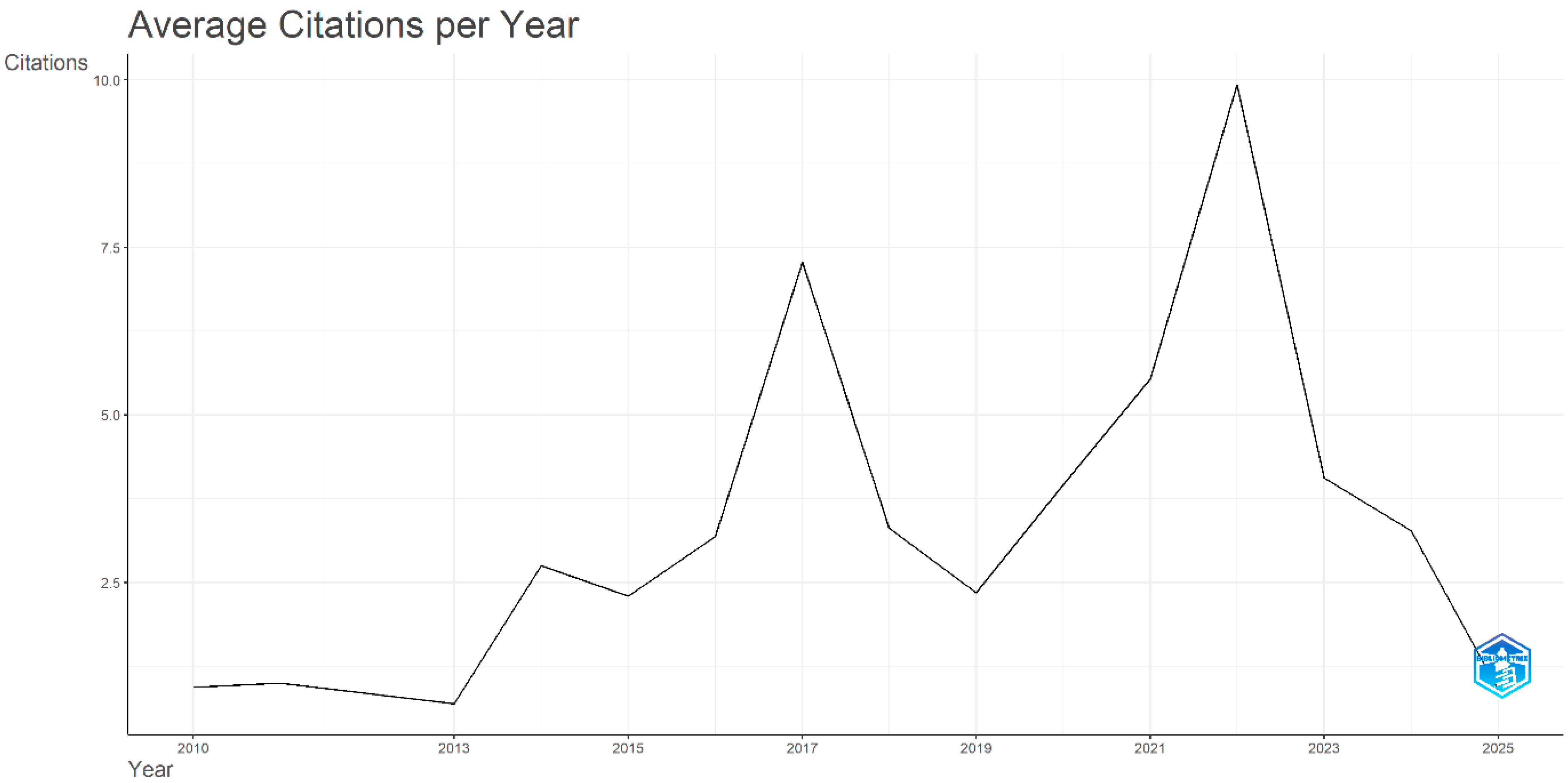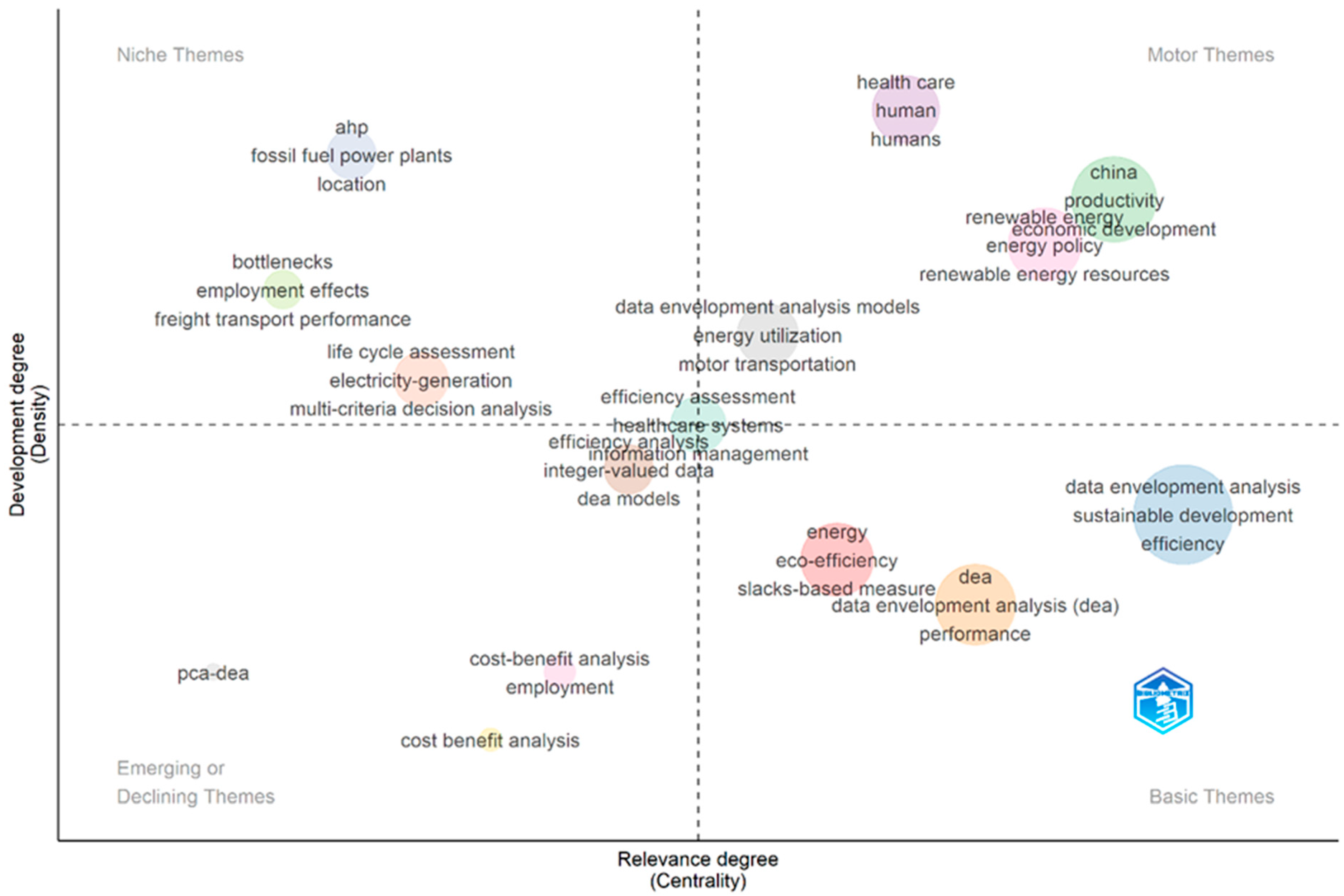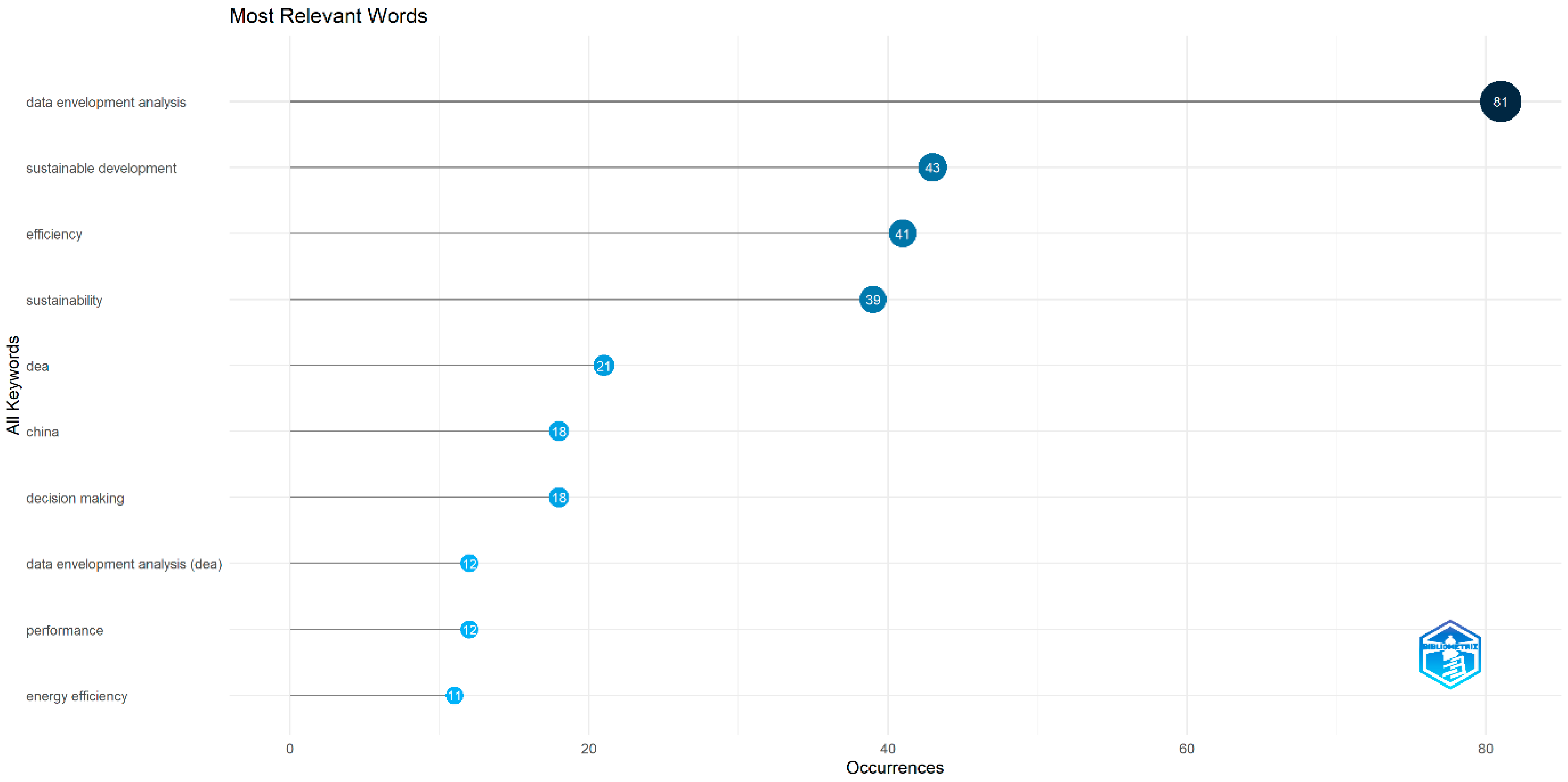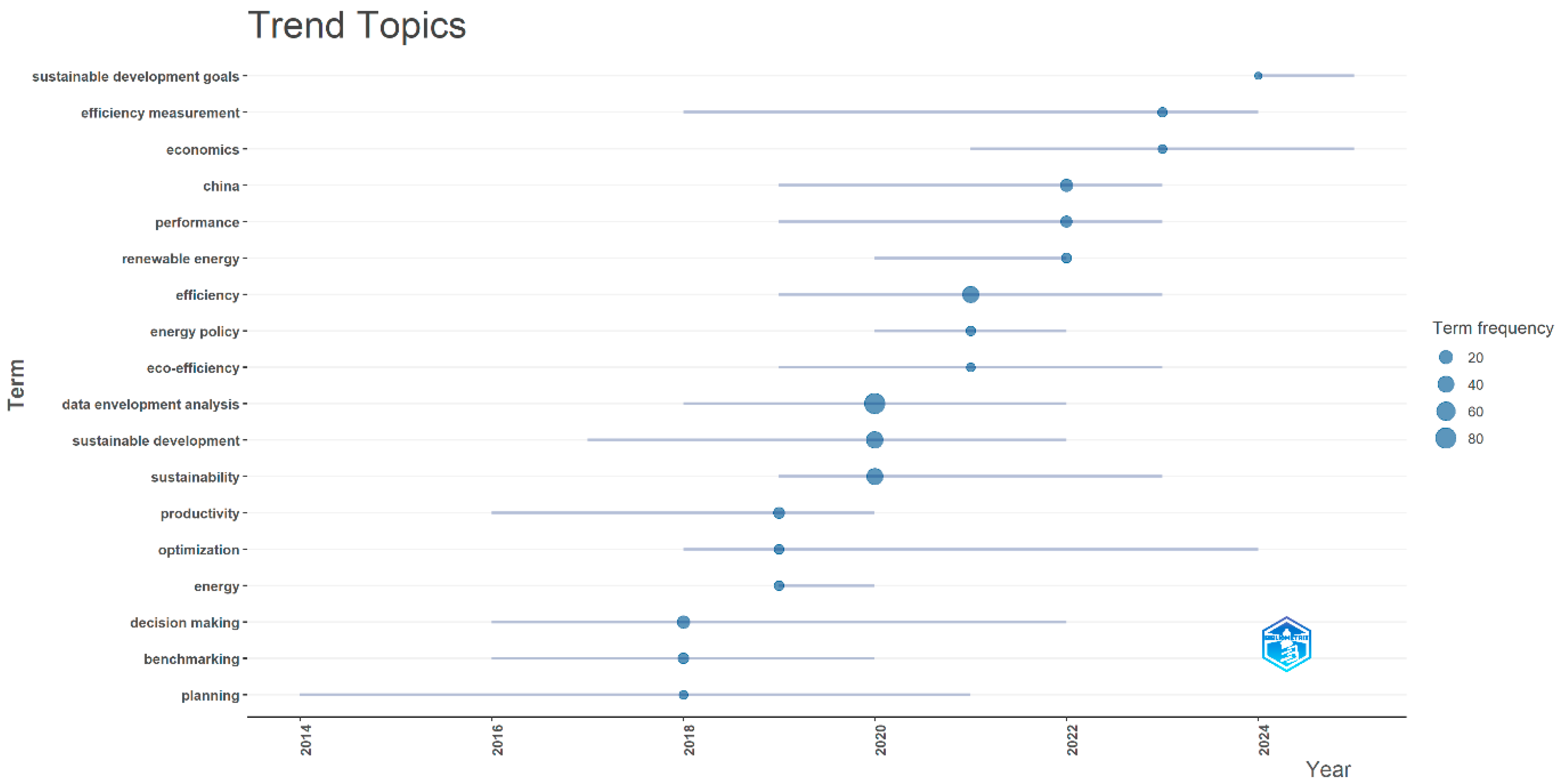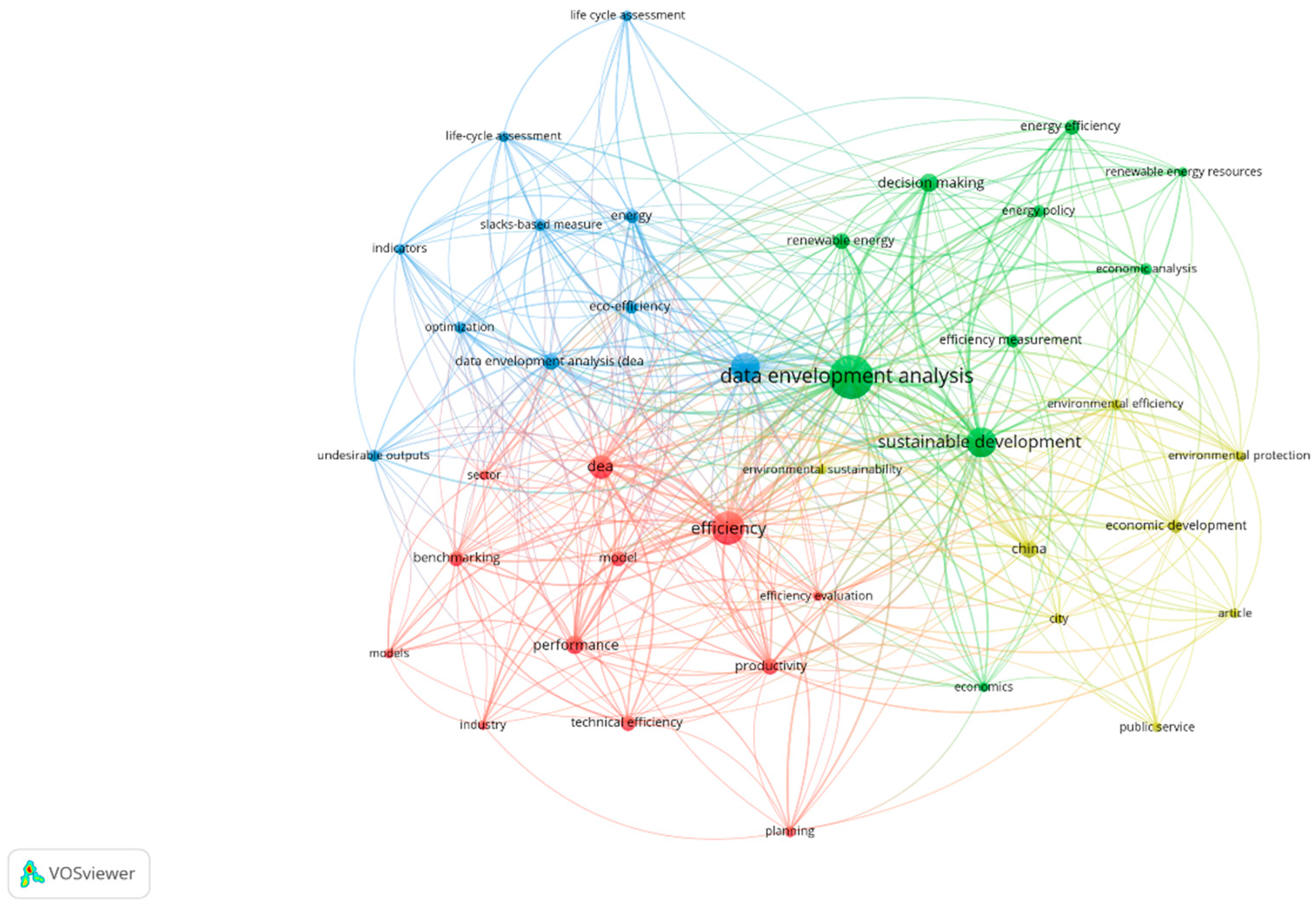1. Introduction
In 1992 at the Rio Conference, the postulates for sustainable development were set, and the vision of a transformative change in natural resources management was presented, “where the well-being of human society would be enhanced through the sustainable use of natural capital” [
1]. Ever since, sustainability has been a central paradigm in addressing the challenges of modern societies, where economic growth, social well-being, and environmental preservation are increasingly interconnected. Complex socioeconomic systems are characterized by many interconnected agents, nonlinear dynamics, and feedback loops. Their performance, efficiency, and long-term success cannot be measured purely by economic and financial indicators anymore, but rather, a new, interdisciplinary, and multidimensional assessment is required, one that integrates equity, resilience, and environmental and ecological responsibility. The sustainability and resilience of complex socioeconomic systems are even more challenging since they operate with constrained resources while actively trying to respond to both market and consumer trends and demands on one side and the environmental and ecological demands on the other. Therefore, these challenges highlight the importance of including both economic and non-economic dimensions of performance when evaluating complex socioeconomic systems.
Recent developments in quantitative modeling and performance evaluation techniques have opened new avenues for analyzing the functioning of these systems. The data envelopment analysis (DEA) method has positioned itself as one of the most important methods used in a targeted way to assess efficiency and productivity, with special emphasis on complex systems. It stands out as one of the most used in practical conditions, which gives it additional value. After its theoretical setting at the end of the 1970s, in the paper of Charnes, Cooper, and Rhodes [
2], DEA has noted very wide application, basically in the field of economics and management, which initiates many operations of companies and institutions in the real and public sector.
However, despite the increase in the body of research, the scholarly literature on sustainability in complex socioeconomic systems is very fragmented across disciplines, and even though there are many individual studies, there has been less systematic effort in terms of a thorough bibliometric analysis to map the global knowledge structure, identify influential works, and research patterns and trends, citation analysis, networks of collaboration between authors and countries, and thematic development [
3]. This gap is particularly significant in the context of data envelopment analysis (DEA), which has become one of the most widely used methods for evaluating efficiency and performance and has shown extremely significant help and a stable direction toward business improvement. According to Martínez-García (2022), “sustainability for complex systems implies enough efficiency to explore and exploit their dynamic phase spaces and enough flexibility to coevolve with their environments” [
4]. Moreover, “the need for effective, efficient, diverse solutions, their local-global, present-future effects, and their unforeseen short, medium and long-term impacts, achieving sustainable complex systems implies the need for Sustainability-designed Universal Intelligent Agents, harnessing the strong functional coupling between human, artificial and nonhuman biological intelligence in a no-zero-sum game to achieve sustainability.”
To respond to this research gap, we conduct a bibliometric and science mapping analysis of 131 peer-reviewed publications retrieved from the Web of Science Core Collection and Scopus covering 2010–31 July 2025. Leveraging Bibliometrix (R) and VOSviewer 1.6.20, the study systematically identifies trajectories of scientific production, thematic developments, citation linkages, and the most prominent scholars, institutions, and journals shaping the field. By doing so, it provides a nuanced perspective on the conceptual, geographic, and analytical contours of research in this area [
5,
6].
Accordingly, this bibliometric study aims to present a comprehensive bibliometric perspective on global research trends in the application of DEA to the sustainability of complex socioeconomic systems. By synthesizing evidence from the Web of Science and Scopus databases, this work not only highlights the main research streams and key contributors but also contextualizes the evolution of DEA applications in relation to pressing sustainability challenges. Interestingly, many scholars believe that by incorporating AI (artificial intelligence), sustainability in complex socioeconomic systems would be easily reachable. Achieving sustainability in complex socioeconomic systems requires solving intractable optimization problems using artificial intelligence and harnessing the coupling between human, artificial, and biological intelligence [
4]. The DEA method holds (or rather projects) a potentially very vital role in this context in the future since a new era of this method has clearly opened with the connection to the development of artificial intelligence.
Although several bibliometric reviews have been conducted in related areas such as energy efficiency, operations research, and sustainability reporting, these studies have typically examined DEA applications in isolated sectoral or methodological contexts. To the best of the authors’ knowledge, there has not yet been a published systematic bibliometric mapping that consolidates the global literature on DEA and its role in evaluating the sustainability of complex socioeconomic systems as an integrated field. This distinction is crucial because sustainability challenges rarely manifest within a single sector, but rather span interconnected domains such as governance, policy, energy, transport, healthcare, and urban systems. By synthesizing evidence from both the Web of Science and Scopus, our review provides the most comprehensive dataset to date, enabling us to uncover broader thematic clusters and cross-disciplinary linkages that have not been captured in earlier reviews. Furthermore, unlike previous bibliometric analyses, this study explicitly identifies underexplored intersections—such as the integration of DEA with artificial intelligence and hybrid DEA–AI models—that open new pathways for advancing methodological and policy relevance. In this way, our study not only fills a critical gap in the literature but also offers a forward-looking perspective on how DEA-based approaches can contribute to sustainability transitions in complex socioeconomic systems.
This paper is organized as follows. In the theoretical background, an overview of the leading non-parametric methodology (the DEA) is presented, together with the importance of sustainability, as well as the literature review of papers tackling the interconnectedness between DEA and sustainability in complex socioeconomic systems.
Section 3 presents the methodology, and
Section 4 reveals the results. The most interesting and intriguing findings are addressed in the fifth section, the discussion section. The last, sixth section, concludes the paper and lays out future guidelines and limitations of the bibliometric study.
2. Theoretical Background
Charnes, Cooper, and Rhodes are considered the founders of the DEA method, introduced in 1978, which represents a mathematical non-parametric methodology of linear programming. The method’s purpose is reflected in the measurement of efficiency [
7]. The first application of the method was aimed at measuring the efficiency of public institutions with an emphasis on health and education. It was used to evaluate the productivity of institutions that used different resources and were mostly nonprofit, thus operating in a different manner. However, an extension of the basic DEA model was developed in 1984 by Banker et al., where they present DEA as a mathematical programming tool with an extension for “use as a tool for control and evaluation of past accomplishments as well as a tool to aid in planning future activities” [
8]. Over time, as it has proven itself in the implementation of the evaluation of the efficiency of institutions, the method has found its application in various areas of economics and management.
Today’s use of the DEA method is very widespread, and it is used in the healthcare and pharmaceutical industry to analyze the efficiency of healthcare institutions and pharmaceutical companies and in education in order to compare the productivity of universities and departments, teaching programs, educational systems, and libraries. Its application in the field of the financial sector is extremely significant, where it is basically used to evaluate the efficiency of banks [
9], portfolios [
10], and investment funds [
11]. It is used in agriculture [
12,
13] and in logistics [
14] and transport [
15] related to the efficiency of distribution centres, ports, and airports. A very important determinant in modern conditions due to the issue of sustainability is the application of the DEA method in the field of energy and ecology [
16].
The DEA method is extremely widely used in the sphere of efficiency assessment and is the most frequently used technique for comparative efficiency analyses and evaluation problems [
13] and mostly used for benchmarking “in both the transportation and service sectors” [
17].
DEA, as a non-parametric method of operational research, has the great advantage that it does not require prior assumptions about the data, which gives it an advantage when used. Other than that, DEA has several advantages compared to other traditional parametric approaches to efficiency measurement [
7,
18] and are as follows: it enables simultaneous use and analysis of multiple input and output variables; it is suitable for small samples; it does not require a priori specification of the functional form of the data, nor a priori determination of weights for those variables (as with index numbers); it does not require specific assumptions about the functional form between input and output, etc. However, the real shortcoming and limitation of the DEA method was detected [
19], which is its greater sensitivity to possible mismeasurement problems.
The DEA methodology, although it has been in use for almost half a century, with its refinements, helps on the way to solving problems in modern business conditions. However, when looking at pressing issues, challenges, or significant improvements of the socioeconomic system—sustainability, new digital technologies (as well as the process of digital transformation), financial technologies, FinTech, and artificial intelligence, it seems as though there is a lack of studies employing DEA in the evaluation of modern and contemporary complex socioeconomic systems. Modern times place great emphasis on sustainability. From an economic or financial point of view, information on the very important issue of sustainability is included in non-financial reporting, i.e., sustainability reporting, which has acquired the dimension of corporate reporting. Sustainability reporting goes beyond financial metrics and provides stakeholders with information on a comprehensive overview of the ESG (Environmental, Social, and Governance) concept, i.e., environmental, social, and management performance of the company. The symbiosis of financial and non-financial information actually completely satisfies the information needs of shareholders and others [
20].
Reporting on sustainability still does not have a generally accepted, prescribed form, and work must be done on the transparency and validity of data, as well as on more consistent publication. Standardized metrics would increase the credibility and competitiveness of this reporting. By solving the mentioned challenges, sustainability reporting would gain the epithet of a completely reliable tool for assessing the sustainable business of companies, which is of great importance in the process of making informed decisions [
21]. The development of the methodology would enable simpler possibilities of use in other types of analysis, where the DEA method would also have its contribution, through the determination of a composite indicator for sustainable development.
Looking at the DEA method and new technologies, its implementation is adequate in the following areas: blockchain, where it can ensure the reliability and transparency of data in the process of efficiency evaluation; big data, for dynamic and more precise DEA analysis and mass databases providing the basis; cloud computing, providing complex DEA operations with fast data processing and easy handling of the growing volume of work; and, in general, related to all IoT (Internet of Things) elements that enable fast data collection, which makes the outputs of the DEA model to be quickly created, which is also one of the elements of efficiency in modern conditions of fast business and decision-making.
Artificial intelligence, which is rapidly entering every pore of business, has the potential to achieve a synergistic effect with the DEA method as well. In hybrid models, it enables DEA methods with neural networks and deep learning to contribute to more efficient modeling of complex systems. Machine learning algorithms are able to indicate adequate inputs and outputs for DEA models, which contributes to overall model optimization. The synergistic effect of artificial intelligence and the DEA method can enable the measurement of efficiency in real time, which contributes to the automation of the evaluation and ensures the continuity of the process. In the field of predictive analytics, DEA models can be enhanced with the help of artificial intelligence by enabling predictions based on big data. As for the application of the DEA method in the future, it finds its place in the sphere of sustainable development, where its role is to analyze the efficiency of business in the green economy and to participate in the creation of circular production models. In the process of evaluating the performance of platforms, digital services, and networks, it can be a support for the digital economy. By contributing to the evaluation of the efficiency of public services, infrastructure, and traffic, it can influence the accelerated process of creating and improving smart cities. Also, in the era of global supply chains, it can contribute to the process of identifying optimal logistics flows, detecting crisis elements, and ensuring resilience.
From its beginnings until today, the DEA method has positioned itself as a universal tool for measuring relative efficiency in complex systems. The future of the DEA method can be projected in cooperation with new technologies and artificial intelligence. The synergistic effect would provide advanced analytics and a greater degree of automation in the decision-making process. In the field of financial technologies, for the creation of more innovative and resilient financial systems, the DEA method can have a very significant effect, if not a key one. Therefore, the DEA method is positioned as one of the most significant methodological approaches for improving business efficiency in modern business conditions. An extremely positive imperative of this method is that it is set up in such a way that the understanding of the system is also linked to it, and that is why it is unique and has great practical application.
3. Materials and Methods
Bibliometric analysis offers “a structured and quantitative approach to capture these research dynamics by examining publication trends, co-authorship networks, keyword co-occurrence patterns, and citation structures” [
22]. Moreover, bibliometric analysis serves as a “powerful tool for evaluating research trends, identifying emerging hotspots, and mapping global collaboration networks” [
23] and as a research field that employs both quantitative and statistical methods to analyze the publication and dissemination of scholarly literature [
24].
The R package Bibliometrix (version 4.3.1) was used to generate annual publications, country-specific publications, most relevant countries, journals, and thematic maps, as well as co-occurrence networks and topic trends [
5]. However, the VOSviewer (version 1.6.20) was applied for a deeper thematic analysis, resulting in network visualization maps and the identification of four clusters and the most dominant trends in research [
6].
In constructing the bibliometric networks, we adopted a full counting method rather than fractional counting, as we aimed to capture the overall volume of contributions rather than adjust for author/institution size. Normalization was performed using association strength, which balances the influence of highly productive nodes. We further applied a basic thesaurus approach, merging singular/plural forms, spelling variants (e.g., “organisation/organization”), and close synonyms to improve map interpretability. These choices follow standard practices in bibliometric analysis and enhance the clarity of thematic clusters.
To ensure transparency in the search and data analysis, a few harmonization steps were applied. First, we adopted a thesaurus approach in VOSviewer and manual preprocessing to reduce synonym-related inconsistencies. For example, conceptually equivalent terms, such as “eco-efficiency” and “environmental efficiency” and “sustainable development goals” and “SDGs,” or spelling variants (e.g., “organisation” vs. “organization”) were merged. Singular and plural forms were also standardized, and common synonyms were unified (e.g., “CO2 emissions” and “carbon emissions”). This procedure enhanced the interpretability of clusters and reduced noise in the mapping outputs. Second, the scope of the analysis was limited to English-language publications indexed in the Scopus and Web of Science databases. While this choice reflects common practice in bibliometric research, it introduces the possibility of language bias, as non-English publications—particularly from regions with strong domestic research traditions—may have been excluded. Consequently, the geographic distribution of results should be interpreted with caution, as the output may overrepresent English-speaking or internationally oriented research communities.
Database and Search Strategy
Two of the globally most renowned databases were searched to retrieve published studies relevant to the evaluation of the sustainability of complex socioeconomic systems with the application of data envelopment analysis. Namely, these are the Web of Science (WoS) and Elsevier Scopus databases. The rationale for their selection lies in their wide reputation as “standard scientific databases” and their “widespread use and recognized status as a comprehensive scientific database” [
25].
A well-rounded search strategy was defined and implemented to retrieve relevant papers for this bibliometric study, where the words “AND” and “OR” were used as part of Boolean logic to narrow and broaden the search accordingly [
26]. The search strategy was applied to both Scopus and Web of Science (WoS), with results merged and deduplicated. Full search strings, including field specifications, filters, document types, and language restrictions, are provided in
Appendix A. The final search was conducted on 31 July 2025, and the time window extended through this date.
More specifically, the following two search queries were applied:
- ○
(“data envelopment analysis” OR DEA) AND (“sustainability” OR “sustainable development” OR “sustainable performance”) AND (“complex socio-economic systems” OR “urban systems” OR “economic systems” OR “public services” OR “energy systems” OR “transport systems” OR “healthcare systems”)
This search query resulted in 197 publications, which were then decreased to 131 after excluding duplicates (papers that appear in both databases) and non-English publications. The study adhered to PRISMA (Preferred Reporting Items for Systematic reviews and Meta-Analyses) guidelines, as shown in
Figure 1 and
Figure 2. A more detailed overview of the search strategy process is presented in
Figure 1, whereas the PRISMA flow is presented in
Figure 2. The PRISMA steps as well as the search query are part of the
supplementary materials.
4. Results
The findings from this bibliometric study reveal interesting insights as follows.
Figure 3 and
Table 1 present the main information regarding the papers included in the study. There are 131 papers in total, from 80 sources, all published between 2010 and 2025, by 685 authors. The annual growth rate was 11.33%. Most of the papers were co-authored papers (only 5 out of 131 were single-authored papers), and 106 of them were articles.
As presented in
Figure 4, there was an enormous increase in published papers in this research area after 2018, and the peak of research productivity occurred in 2020. However, ever since, the decrease has been consistent and gradual, revealing a trend of decreasing interest in the topic, which could be caused by various reasons, such as research stream saturation, shifts in global research priorities (COVID-19 and energy transition), and methodological consolidation. However, it should be taken into consideration that the apparent post-2020 decline may be partly attributable to indexing lags in Scopus and Web of Science and therefore should be interpreted with caution and tackled in future studies.
Figure 5 visually reveals the most productive countries in terms of published papers in this research subject. The darkest blue colour reveals that China is the most scientifically productive country, and this is also confirmed in
Figure 6, which reveals the most relevant countries, along with the corresponding authors’ countries. China is the top country with more single-country publications than multiple-country publications, thus demonstrating strong vitality and potential on this topic, and is followed by Spain and Iran. This underscores the growing prominence of China in DEA–sustainability research, which may reflect both rising national research investment and shifting global research priorities. What is intriguing is that papers with corresponding authors from Iran, the Czech Republic, Korea, Latvia, Russia, Belgium, Bosnia, Cyprus, India, Italy, and Lithuania are all single-country publications. In contrast, papers with corresponding authors from Switzerland, Canada, and France (i.e., developed economies) are all multiple-country publications. The observed pattern between single-country and multi-country publications highlights a potentially important cultural and academic dimension of research collaboration and can be partly explained by cultural, institutional, and policy dimensions. The predominance of single-country publications in some regions, contrasted with the exclusive presence of multiple-country publications in others, suggests that differences in academic traditions, institutional incentives, or national research policies may play a role. In some regions, academic culture emphasizes local dissemination and national policy relevance, which may result in a higher share of single-country studies. Conversely, countries integrated into supranational research frameworks, such as the European Union, often benefit from collaborative funding schemes that incentivize multi-country projects. At the institutional level, the presence of international partnerships and joint research centres tends to foster cross-border collaboration, whereas institutions without such networks may publish more nationally focused work. Finally, policy environments also play a decisive role: governments that actively support international research consortia stimulate multi-country publications, while those prioritizing domestic priorities may unintentionally reinforce single-country outputs. This perspective adds nuance to the interpretation of collaboration patterns by situating them within broader sociopolitical contexts. Future studies should further investigate how cultural and systemic factors shape collaboration practices, as understanding these dynamics could shed light on why some countries prioritize domestic publication while others favor international partnerships.
Figure 7 reveals the most relevant affiliations regarding publications in the Web of Science and Scopus databases on the topic of the application of DEA in the evaluation of the sustainability of complex socioeconomic systems. These are the Islamic Azad University (United Arab Emirates, n = 11), followed by Imperial College London (England, n = 8) and Universidade Federal de Pernambuco (Brazil, n = 8). To clarify, for affiliations and sources, counts are based on total documents rather than fractionalized contributions. Rankings are reported inclusive of self-citations; however, sensitivity checks suggest that adjusting for self-citations does not substantially alter the relative order. The most relevant sources (i.e., journals) where these papers and studies were published are presented in
Figure 8. Therefore,
Journal of Cleaner Production,
Sustainability, and
Energy Journals are proven to be the most relevant venues for such research.
Figure 9 visually presents the average citations per year and reveals a sharp incline in 2017, a sharp decline in citations in 2019 and thereafter, and an incline and the highest peak in 2022.
The “co-occurrence analysis measures the frequency with which different keywords appear together in the same paper, providing insights into their relationships” [
22]. The co-occurrence network in
Figure 10 reveals how concepts related to sustainable development cluster into two main thematic areas, namely the policy/governance/planning cluster (red cluster) and the environmental/ecological/management cluster (blue cluster), and the central bridging terms (e.g., sustainable development, policy, and governance) connect both these domains.
5. Discussion
The thematic map generated from the Bibliometrix, shown in
Figure 11, reveals very interesting insights into global research trends in data envelopment analysis for evaluating the sustainability of complex socioeconomic systems. A thematic map in Bibliometrix (or Biblioshiny, its Shiny web interface in R) is a powerful visual tool used in bibliometric analysis to explore and interpret the structure of research themes within a scientific field, revealing how themes or topics are distributed, their level of development, and how central they are to the field. In the thematic map diagram, themes are positioned by centrality (relevance to the field) and density (internal development). For illustration, “efficiency measurement” appears as a motor theme, “green supply chains” as a niche theme, “blockchain” as an emerging/declining theme, and “DEA methodology” as a basic theme.
Thus, the Motor themes quadrant reveals the themes with high centrality and high density, meaning these are well-developed and important themes that are driving this field. These are as follows: “China + productivity + renewable energy + economic development,” “health care + human,” “data envelopment analysis models + energy utilization + motor transportation + efficiency assessment + healthcare systems,” and “renewable energy + economic development + energy policy + renewable energy resources.”
The Niche themes quadrant includes highly specialized and well-developed themes, but not central to the field. These are as follows: “ahp + fossil fuel power plants + location,” “bottlenecks + employment effects + freight transport performance,” and “life cycle assessment + electricity-generation + multi-criteria decision analysis.”
The Emerging or Declining themes quadrant includes underdeveloped and marginal themes, and the last quadrant is the bottom right quadrant titled Basic themes. The Emerging or Declining themes are: “efficiency analysis + information management + integer-valued data + dea models” and “cost-benefit analysis + employment.”
The Basic themes include important but not well-developed themes, and these are “energy + eco-efficiency + slack-based measure,” “dea + performance,” and “data envelopment analysis + sustainable development + efficiency.”
A particularly noteworthy finding of this study is the contrast between China’s obvious dominance in scholarly publication and productivity and the tendency of many Western countries to prioritize multi-country co-authored publications. This asymmetry is not merely descriptive but has important implications for knowledge diffusion and research policy. The prevalence of single-country publications in China may reflect strong domestic research capacity and state-driven incentives that prioritize national productivity. In contrast, the reliance on international collaborations in Western countries suggests an academic environment that emphasizes networked knowledge exchange, often supported by supranational research frameworks (e.g., the European Union’s Horizon programs). These divergent patterns indicate that the global DEA–DEA-sustainability research landscape is shaped as much by institutional incentives and policy regimes as by purely academic priorities. A deeper understanding of these dynamics can inform strategies to enhance equitable knowledge diffusion and encourage more balanced scientific contributions from both emerging and Western economies.
The emergence of themes such as “undesirable outputs” and “life cycle assessment” further highlights the field’s growing alignment with topical sustainability debates. “Undesirable outputs” (e.g., emissions, waste, or other environmental externalities) resonate strongly with ongoing discussions on carbon neutrality and net-zero transitions, as they allow DEA models to more explicitly capture trade-offs between efficiency and environmental responsibility. Similarly, the increasing presence of “life cycle assessment” reflects a methodological convergence between DEA and broader ESG reporting frameworks and circular economy practices, where the focus is not only on efficiency but also on long-term resource stewardship. Taken together, these insights suggest that DEA-related sustainability research is changing and evolving in ways that mirror broader sociopolitical transformations, such as the geopolitics of scientific production, the institutionalization of ESG standards, and the urgency of transitioning to low-carbon and circular economic models. This contextualization strengthens the practical relevance of our bibliometric mapping and highlights the capacity of DEA to contribute not only to methodological innovation but also to policy design and real-world sustainability transformations.
Figure 12 shows that the terms with the most occurrences are “
data development analysis,” “
sustainable development,” and “
efficiency.” These terms are highlighted because of their high frequency and significant overall link strength within the analysis. This indicates a strong research focus on assessing and improving efficiency and sustainability through advanced development methods and strategies.
Figure 13 presents the Trend topics. The dominant keywords with the most term frequency are “
sustainability development goals,p” “
efficiency measurement,” “
China,” “
renewable energy,” “
energy policy,” and “
eco efficiency,” reflecting both global policy priorities and country-specific dynamics. The prominence of “SDGs” underscores alignment between DEA applications and international sustainability agendas, while “efficiency measurement” highlights methodological consolidation. The frequent appearance of “China” mirrors the country’s increasing research output, and “energy policy” signals a strong sectoral focus. Practically, these trends suggest opportunities for cross-national benchmarking linked to the SDGs and for piloting DEA-based evaluations in energy transition policies, where methodological maturity is already high.
Terms such as “data envelopment analysis” (81), “sustainable development” (43), “efficiency” (41), and “sustainability” (39) have the highest frequency, which indicates their key role within the topic. These terms emphasize the focus on the analysis of efficiency, sustainability, and development goals and on the application of advanced modeling approaches such as DEA. Less common are terms related to their specific applications and regional focuses, such as “China,” “decision making,” and “performance,” which indicate a broader comprehensive consideration of the topic, with a particular interest toward regulatory and regional aspects in the field of sustainability and energy. Overall,
Figure 13 highlights the dominant themes and trends in research that focuses on sustainability and performance evaluation on a global scale, with an emphasis on advanced analytical methods and regional challenges.
For a deeper thematic analysis, additional data analysis was conducted using the VOSviewer program. The program is used for constructing and visualizing bibliometric networks, as shown in
Figure 14. In the keyword analysis, a threshold of a minimum of five impressions was used. Out of a total of 1212 analyzed keywords, 40 of them meet the set frequency threshold, while the remaining 1172 keywords appear less than five times. This means that, out of a total of 1212 keywords, only 40 of them occur often enough to have analytical importance, while most appear too few to be significant for further processing. These results indicate that a relatively small number of keywords are repeated often enough to have a significant impact on the analysis, while most remain below a defined threshold. The analysis singled out 40 items that were distributed in four clusters.
A total of 405 links have been identified within the network, and the total strength of the connection between the items is 969. These results indicate the existence of a well-defined structure, with the number of clusters being relatively small, suggesting the grouping of keywords around several thematic units. The overall strength of connectivity (969) shows that there is a solid degree of interconnectedness between the items, which contributes to the coherence of the clusters identified.
Red cluster includes terms such as benchmarking, DEA, efficiency, efficiency evaluation, industry, model, performance, planning, productivity, sector, and technical efficiency. This set of terms emphasizes the primary role of data envelopment analysis as a methodological framework for measuring efficiency and productivity in various industry and sectoral contexts. Terms related to performance planning and evaluation refer to the use of the DEA method not only to analyze existing performance, but also to strategically direct productivity improvements and technical efficiency. In the context of the paper topic, this cluster represents the basic research direction—focus on the methodological foundations and practical applications of DEA for assessing the sustainability of complex socioeconomic systems through efficiency and benchmarking.
The green cluster brings together terms such as data envelopment analysis, decision making, economic analysis, economics, efficiency measurement, energy efficiency, energy policy, renewable energy resources, and sustainable development. This group of terms indicates a research direction in which DEA is used as a tool for decision-making and evaluation of effectiveness in the field of economic analysis and sustainable development. The aspect of energy efficiency and policy was particularly emphasized, as well as the role of renewable energy sources in the transition toward sustainable socioeconomic systems. In the broader context of the topic of the paper, this cluster reflects the growing interest in the application of the DEA methodology in sustainability assessment, where efficiency measurement is combined with the challenges of decision-making in energy and economics.
Blue cluster includes the concepts of DEA, eco-efficiency, energy, indicators, life cycle assessment, optimization, slack-based measure, sustainability, and undesirable outputs. This group of terms focuses attention on the methodological development of DEA with an emphasis on measuring environmental performance and sustainability. Concepts such as slack-based measure and undesirable outputs suggest adapting the DEA model for cases where negative impacts need to be considered, such as greenhouse gas emissions or other environmentally harmful effects. At the same time, the use of indicators, life cycle assessments, and optimization approaches connects this cluster with efforts to build robust models for assessing sustainability in energy and environmental systems. Within the topic of the paper, this cluster reflects the trend toward more sophisticated and environmentally sensitive applications of the DEA method.
The yellow cluster includes the terms China, city, economic development, environmental efficiency, environmental protection, environmental sustainability, and public service. This group of terms shows the focus of research on a geographical and sectoral context, with China being particularly prominent as a country with a large number of studies in the field of DEA application. Emphasized terms related to cities, public services, and economic development indicate research in urban environments, where the issues of sustainability, environmental protection, and the effectiveness of public policies are in focus. In the context of the topic of the paper, this cluster illustrates how DEA is used to assess sustainable development in specific socioeconomic systems, with an emphasis on the Chinese model of urbanization and economic transformation.
A complementary layer analysis focused on identifying the most dominant trends in research in the selected sample of 1212 terms. Out of 40 terms, terms containing general terms have been removed. These are the terms presented in
Table 2 that highlight the most relevant, specific areas and concepts in research on the use of DEA to assess the sustainability of complex socioeconomic systems.
The terms presented in
Table 2—such as “technical efficiency,” “life cycle assessment,” “undesirable outputs,” and “sustainable development”—collectively reveal a growing scholarly focus on the implementation of DEA with broader sustainability and environmental performance metrics. The repeated prominence of concepts like “efficiency measurement” and “energy efficiency” signals a dynamic shift toward addressing real-world ecological challenges and optimizing resource utilization. Furthermore, the appearance of “undesirable outputs” suggests methodological advancements aimed at more comprehensively capturing negative externalities, such as pollution, within performance evaluation models. These findings indicate that DEA-related research is increasingly aligning with global policy agendas focused on the transition to low-carbon economies, sustainable urbanization, and inclusive social development. Moving forward, there is substantial potential for the field to expand its policy relevance by fostering interdisciplinary collaborations—particularly through hybrid DEA–AI approaches—and applying these tools in sector-specific case studies that directly inform regulatory and management strategies.
6. Conclusions
This bibliometric study provides a comprehensive overview of global research trends on the application of data envelopment analysis (DEA) for evaluating the sustainability of complex socioeconomic systems. The main objective and the rationale behind this study lie in mapping and analyzing global trends, thematic clusters, the application of various DEA methodologies, and their interconnectedness with the sustainability of complex socioeconomic systems. For this purpose, a bibliometric study employing the R package Bibliometrix software, as well as the VOSviewer 1.6.20, was conducted to gain insights into the trajectories of scientific production, thematic developments, citation linkages, and the most prominent scholars, institutions, and journals shaping the field.
The findings revealed a steady growth in publications over the last decade, with a pronounced surge after 2018 and a subsequent decline in recent years, suggesting an evolving research landscape. The findings reveal that China has established itself as the global leader in publication output, while other countries demonstrate contrasting patterns of research collaboration—some favouring domestic publication strategies and others relying exclusively on international partnerships. This divergence underscores the influence of cultural, institutional, and policy factors in shaping research dynamics. The increasing number of contributions from China could be partly explained by the country’s overall rise in global research productivity, reflecting the natural trajectory of the world’s second-largest economy. Yet, it is worth considering whether this trend also reflects a relatively stronger focus on sustainability benchmarking within Chinese scholarship compared to other regions. At the same time, the relative decline of contributions from the United States may be associated with structural factors such as funding cuts, as well as the growing backlash against ESG-related research [
27]. Similarly, broader macroeconomic uncertainties in developed markets [
28] may have undermined research productivity in these contexts. All these considerations suggest that publication patterns are not only the result of academic preferences but are also shaped by deeper cultural, institutional, and policy dynamics across regions. Notwithstanding, the comparison of the dominance of China and leading institutions with collaboration patterns not only reveals the structural dynamics of the research community but also highlights potential systemic barriers to global knowledge exchange and technical innovation. Leading institutions such as the Islamic Azad University, Imperial College London, and Universidade Federal de Pernambuco have played a pivotal role in advancing the field, while top-tier journals such as the
Journal of Cleaner Production, Sustainability, and
Energies have served as key dissemination platforms. The conceptual analysis revealed that research in this area is structured around two major domains: the policy/governance/planning dimension and the environmental/ecological/management dimension, with sustainable development acting as the central bridging theme. This dual focus reflects the inherently interdisciplinary nature of sustainability research, which requires balancing governance frameworks with ecological imperatives. The findings of this bibliometric study confirm the centrality of DEA as a vital methodological tool in evaluating sustainability within complex socioeconomic systems, while also revealing clear geographic and thematic asymmetries.
The recent decrease in publications that occurred after 2020 suggests that the research area may be entering a stage of thematic consolidation rather than expansion, which brings both challenges and opportunities. The ever-increasing hybrid approaches of DEA with artificial intelligence and machine learning lead to potential methodological innovation, particularly in handling big data and enhancing predictive capacity. Recently published papers reveal growing interest in hybrid DEA–AI models that combine efficiency evaluation with predictive and optimization capabilities. For instance, ref. [
29] developed an SBM (slack-based measure)–DEA model to evaluate the working capital management efficiency and an ANN (artificial neural network) to identify the key predicting variables and forecast performance. Other hybrid DEA–AI studies include the study by [
30], which integrates fuzzy DEA with ANN to assess inefficiencies in forest management, and the study by [
31], which employs network DEA with several machine learning algorithms to predict and assess the sustainability of supply chains. These novel studies illustrate the synergies between DEA and AI in managing and dealing with uncertainties and predicting results, thus providing practical guidance for sustainability policies. This trend should also be perceived within the wider scholarly reorientation that followed the COVID-19 pandemic. As noted in the studies [
32,
33,
34], the pandemic profoundly influenced academic research and policy agendas by focusing on crisis-response mechanisms, unconventional monetary policy, and the resilience of corporate and labor systems. These developments absorbed substantial scholarly capacity worldwide, temporarily diverting focus from established fields such as DEA-based sustainability analysis. Accordingly, the apparent post-2020 decline may reflect not only thematic consolidation but also a reallocation of research effort toward more urgent COVID-related economic and financial challenges. Future work should reevaluate this trend to assess whether the observed decline represents a temporary disruption or an overall shift in research priorities.
For policy and practice, the findings suggest that DEA-based assessments are increasingly relevant for designing energy and transport policies, thus supporting sustainable urban development and improving efficiency in public services. Beyond methodological contributions, our findings resonate with broader theoretical perspectives on how sustainability performance can be enhanced. As highlighted by the study of [
35], knowledge sharing and transformational leadership significantly strengthen innovation capability, which in turn fosters environmental dynamism and positively impacts sustainability outcomes. These insights complement our bibliometric evidence by showing that the evolution of DEA research is not only a matter of methodological refinement but also part of a wider transformation in how organizations and systems approach sustainability. Integrating DEA-based benchmarking with pathways that emphasize leadership, innovation, and dynamic capabilities could therefore provide a more holistic framework for advancing both theory and practice in sustainable socioeconomic systems.
However, there is a need to address its limitations. Although it provides valuable insights into global research trends on the applications of DEA for evaluating sustainability in complex socioeconomic systems, several limitations are present. First of all, the analysis and bibliometrics were limited to only two of the global scientific databases (the Web of Science and the Scopus database). Even though these are the most renowned and recognized databases globally, there is a possibility that other studies were relevant to this analysis but were not included in this study simply because they were indexed in other databases. Moreover, by incorporating complementary databases such as Dimensions or Google Scholar, the coverage might expand, particularly for non-English or practitioner-oriented publications. Secondly, there is a possibility that other relevant publications have used different keywords and that the applied search strategy did not encompass them. Therefore, every bibliometric study is subjective, and as a means to overcome these limitations, a future study on this topic is suggested. Third, as shown in
Figure 2, there were nine papers written in non-English that were excluded from the study. Fourth, the overall flaw of bibliometric studies should be tackled, and this is the fact that they primarily offer a quantitative overview of a certain topic and do not assess the methodological quality or depth of individual papers, which requires complementary systematic or meta-analytical approaches that would be advised for future work. Notwithstanding, future work could also consider expanding the scope of the analysis by surveying other scientific databases. Scholars could also investigate the regional collaboration patterns identified in this study, especially the cultural and institutional drivers behind single-country versus international publication practices. For the biggest practical contributions, future studies should focus on the practical applications of DEA in specific socioeconomic sectors, linking bibliometric insights with real-world sustainability outcomes, ensuring that methodological advancements translate into practical contributions for resilient and sustainable socioeconomic systems. Fifth, while our analysis mapped global trends and thematic clusters, future work could enrich the approach through case-linked bibliometrics that explore how DEA is applied in specific policy domains such as energy regulation or transport planning. And lastly, while this study focuses on DEA-based approaches, it is important to acknowledge that alternative sustainability assessment methods—such as life cycle assessment (LCA); Environmental, Social, and Governance (ESG) indicators; material flow analysis (MFA); and ecological footprinting, as well as structural estimation or even reduced form techniques—also play central roles in the evaluation of sustainable development. The DEA methodology differs from these methods by focusing on the relative efficiency, which makes it particularly suitable for cross-sectional and comparative studies. However, the observed bibliometric patterns—such as differences in publication trends across countries—may be partly shaped by the relative prominence of alternative methodologies within national research and policy agendas. For example, countries with strong traditions in LCA or ESG reporting may produce fewer DEA-related outputs, whereas others may favor DEA for benchmarking the performance of institutions or regions. Notwithstanding, our thematic maps suggest fertile ground for piloting hybrid DEA–AI applications in priority sectors, including renewable energy, urban mobility, and smart infrastructure, which could serve as testbeds for methodological innovation and policy relevance.
Overall, this bibliometric study emphasizes the importance of DEA as a methodological tool for evaluating sustainability in socioeconomic systems, while also pointing to the need for future research, to further integrate cross-disciplinary perspectives and expand collaborative networks. Moreover, recommendations for future research must go beyond generic calls for “more collaboration” or “interdisciplinary approaches” and instead advocate for concrete initiatives: piloting AI-enhanced DEA models in specific sectors, fostering comparative studies across different regulatory environments, or establishing standardized benchmarking tools to bridge the gap between bibliometric insights and actionable sustainability outcomes. By anchoring critical analysis in these broader debates and articulating direct, evidence-based policy recommendations, the manuscript can significantly increase its contribution to both scholarship and practice.
In addition to summarizing the main findings, this study highlights several practical implications. First, international research consortia should be promoted and thus become more visible to strengthen collaboration and generate more multi-country evidence on sustainability benchmarking. Second, developing and piloting hybrid DEA–AI applications in domains such as renewable energy and urban planning could provide valuable demonstrations of methodological innovation in practice. The prominence of energy policy and SDGs clusters indicates clear opportunities for piloting DEA–AI applications in renewable energy planning and for aligning benchmarking studies with UN policy frameworks. Finally, future efforts to standardize benchmarking practices across countries and sectors would enhance comparability, transparency, and policy relevance. Together, these recommendations translate the bibliometric insights into actionable directions for policymakers, institutions, and corporate actors.

